| First Ride 2012 Arctic Cat Wildcat 1000
By Bob Balunda, Factory UTV It was nearly a year ago that we saw a YouTube video taken at the Arctic Cat 50th Anniversary celebration, which gave us our first glimpse of what would become the2012 Arctic Cat Wildcat. Built in the USA with looks very different than what we’ve become accustomed to for a sport UTV, the Wildcat is more reminiscent of an off road race car with it’s huge suspension travel and dune buggy-esque styled plastics. We were intrigued by the Wildcat to say the very least and put our name down on the waiting list at our local Arctic Cat dealership. We finally got the phone call that our Wildcat had arrived and wasted precious little time heading over to the dealer to bring our new toy home. I wasn’t really sure about the Wildcat’s looks based on what I’d seen in pictures and had reserved judgment for an in person inspection. I have to say I really do like the looks of Arctic Cat’s first offering in the pure sport UTV segment. Our black metallic machine looked magnificent in the light of day and time will tell how the automotive style painted plastic holds up to the off road environment. A quick walk around had me thinking that the Wildcat made the other UTV’s in our shop all of a sudden seem somewhat dated and no question about it, the Wildcat screams bleeding edge UTV performance. A closer look at the big Cat reveals several leaps forward in UTV performance design. The HSLA steel full perimeter exoskeleton frame design, 5 point multi link trailing arm rear suspension system boasting a full 18 inches of suspension travel, and double wishbone design front suspension with a full 17 inches of suspension travel are all industry firsts. Beautiful Walker Evans adjustable shocks with remote reservoirs grace each corner of the Cat and the electronic power steering unit all add to the jaw dropping list of standard features. The 1000 H.O engine that is at the heart of the new Wildcat is the largest engine offered in the Pure Sport class. Built in the USA, the 951cc V-Twin, SOHC 4-stroke is fed by an electronic fuel injection system with a single 50 mm throttle body. A very nice set of ceramic coated headers dump into a huge silencer exiting the drivers side of the vehicle out the back. The engine is essentially a version of what Arctic Cat has been using to power it’s Prowler XTZ line, tweaked to deliver even more torque and horsepower to go along with all that suspension. I really like seeing the placement of the radiator on the Wildcat, up behind the seating compartment out of harms way, which I think is a big plus for an off road vehicle. A couple of areas of concern for me are the forward mounted tie rods and the single shear mounted shocks. The tie rods mount to the front of the spindle which places them at the lower leading edge of the Wildcat. While this mounting location does provide improved performance, helping to eliminate bump steer, we’ll certainly be addressing UHMW protection for them ASAP. The single shear shock mounts also give me pause for concern, because I’d much rather see a double shear mount design used and only time will tell if my concern is justified.
While all of this new technology certainly sounds impressive, what really matters is what happens when the rubber meets the er…off-road. So we loaded up the Wildcat, brought along ourPolaris RZR XP 900 and headed for the desert to put these two pure sport thoroughbreds through their paces in the dunes and desert trails surroundingSand Mountain Nevada. Once in the cockpit, I really loved the feel of the Wildcats seating arrangement. Definitely more room and comfort than either the RZR XP or Can-Am Commander, the seats come with a hole under the headrest to run your safety restraints through. Makes me wonder when one of these manufacturers will finally step up and actually offer 5 point restraints as original equipment? Probably my favorite part about the cab of the Cat is the seating position. With the engine placement behind the cab, Arctic Cat was able to lower the seating position and it really has that sports car feel to it. With a lower center of gravity than that of the XP, Arctic Cat was still able to maintain its class leading ground clearance. The Wildcat also comes stock with a set of uh… doors? Basically they are a large bar across the top with a big open gap down to the rocker panels. With a seat belt buckle type latch, opening and closing was a breeze, we noticed no rattle and yes they are a real nice touch. I did not like the safety grab handles provided on the Wildcat at all. The handle incorporated in the driver side door left my leg bruised after 3 days of pounding around in the desert. The same was true of the passenger handle placed in the passenger door. My opinion is that all sport UTVs should come with a safety grab handle next to the shifter like Can-Am provides on their Commanders as well as an under dash, two hand grab bar like you find on all the Polaris RZRs. The LED headlights and LED taillights are the best I’ve seen offered as standard equipment on any UTV. Firing up the power-plant gives out an exhaust note that is a nice low rumble, dare I say it purr’s like a kitten. The shift lever seemed very simple to use and a quick shift into 2wd high and we were on our way. Immediately I notice that the power delivery is silky smooth, the engine clutch combo is dialed in very nicely for low speed maneuvers. The big twin has a very linear power delivery from idle to rev limiter, with no annoying Can-Am engagement clunk or herky jerky low speed operation you get from the RZR line. Letting it rip I have to be honest and say, initially I felt somewhat disappointed. There is not the big rush feeling that the RZR XP delivers when you mash down on the throttle. As it turns out though, the big Cat is sneaky quick. Repeated drag races between our RZR XP and Wildcat proved that they were in fact very closely matched with the Wildcat and XP trading wins back and forth. It wasn’t until we started drag racing up the tall steep face of Sand Mountain that the XP started showing some dominance. Our conclusion here is that the Wildcat will probably need some clutch work if you are a serious hill-shooter. Once I realized how quick the Wildcat actually was, I have to say I really love the smooth power the Wildcat delivers. I would venture to guess that the aftermarket will have ignition modules, exhaust systems and clutches that will have the big kitty breathing fire in no time at all.
Suspension? Let me just say, WOW! It’s hard to describe just how good the Wildcats suspension really is. I have driven many expensive top of the line long travel equipped UTVs and none of them match the Wildcat. I searched out the biggest nastiest whoops I could find and the Wildcat handled them with ease. No doubt aided by it’s 90 inch wheelbase, the dreaded huckabuck was nowhere to be found no matter the nastiness of the whoops we slammed through. Long leaps resulted in landings that felt like you were on pillows. Simply put, right out of the box the Wildcat suspension system is brilliant. I was pleasantly surprised how well the Wildcat handled as well, it hides that extra wheelbase very well, but no doubt the tighter the trail the more that extended length will become a factor. The power steering was awesome, it gives excellent feedback and requires little effort to steer the Wildcat. Power steering should be standard equipment on all sport UTVs. There is a noticeable amount of lean when cornering hard, something that I think comes with the territory when dealing with really long travel suspension systems. It felt, I suspect a little like what a roaring trophy truck feels like in the corners with that noticeable body roll. It did not take long to get used to it though as I hammered the big cat through turns, the machine stayed planted on all fours. The 4wd drive system is engaged electronically with a switch on the dash that includes a lever to activate full lockers. On most UTV’s you definitely feel the extra drag of 4wd on the steering wheel, but this is not the case with the Wildcat thanks to it’s electronic power steering. While I clearly prefer the seats and ergonomics of the Wildcat over the Commander and RZR lines, I’d put the overall fit and finish of the Wildcat cab right between the RZR and top ranked Can-Am. I came away completely impressed after my weekend ride with the Wildcat. I hope after a year of ownership it will prove as durable as the RZR XP has. I have some concern that by its very nature, people will hammer the Wildcat like no other UTV. It absolutely begs for it! Time will tell how it stands up to the torture tests it will undoubtedly receive. For its first step into the pure sport arena, Arctic Cat has indeed taken the sport UTV world one giant leap forward. |

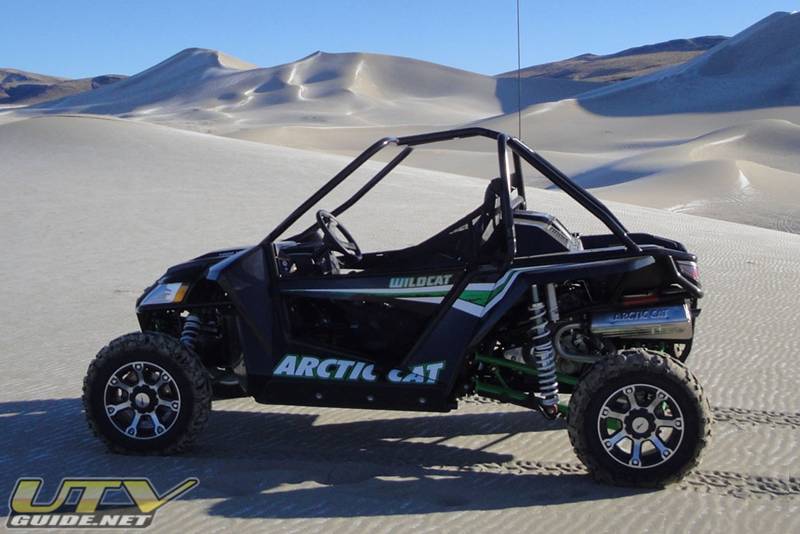
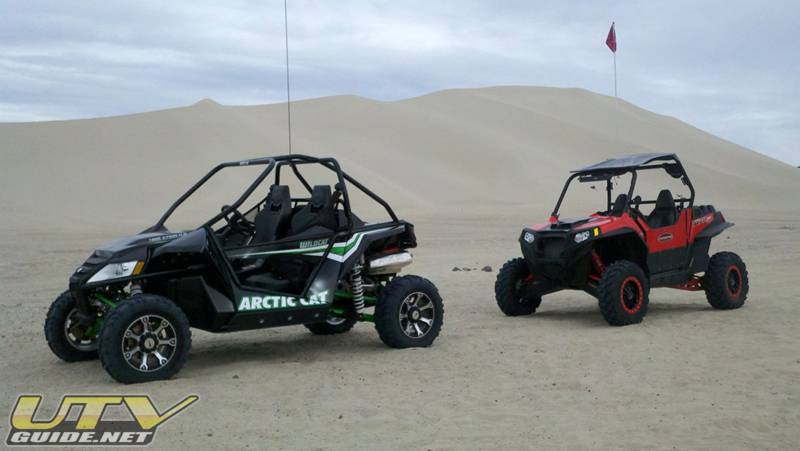
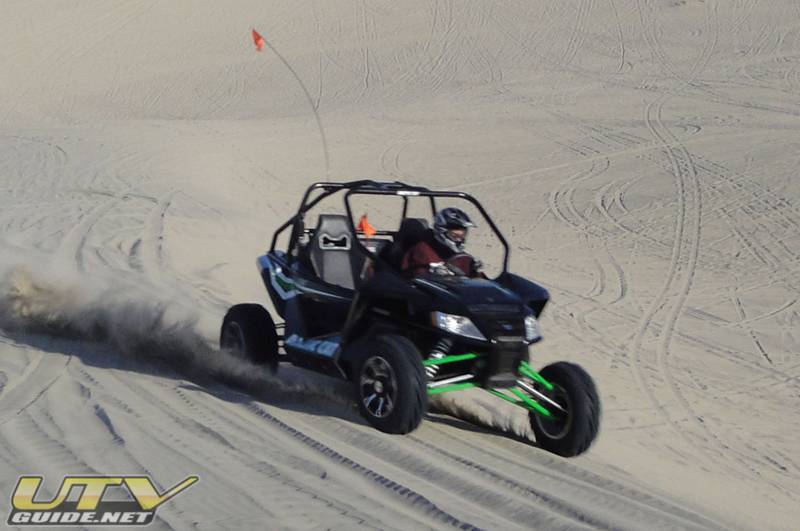
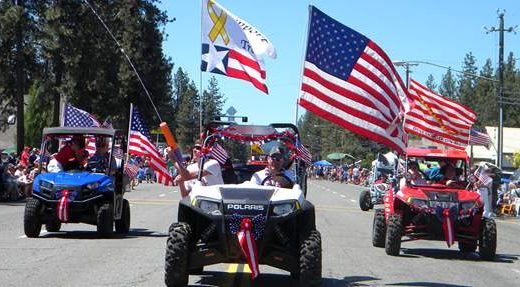
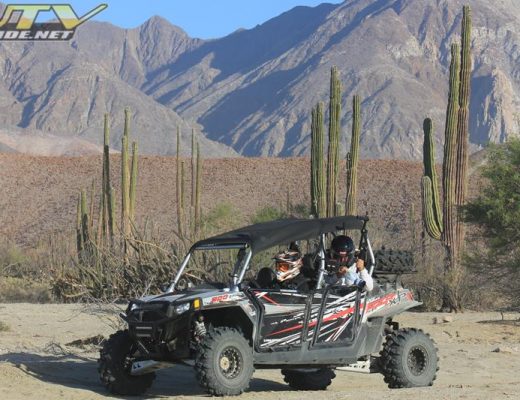
No Comments